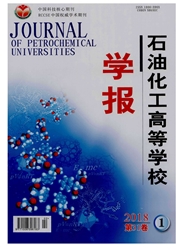

 中文摘要:
中文摘要:
在对液氨泄漏过程分析的基础上,根据两相流泄漏模型,初步探讨了液氨分别在常温高压和低温加压两种存储方式下潜在危险性的大小.当储罐破裂导致液氨泄漏时,常温高压储存下的泄漏速率大约是低温加压储存的两倍.因此,仅从安全的角度考虑,应优先采用低温加压的方式储存液氨.针对较危险的常温高压存储,通过模拟计算,分析了管道长度、管道直径、存储状态以及饱和存储温度对液氨两相质量泄漏速率的影响.计算结果表明,液氨处于饱和状态时的潜在危险性要大于不饱和状态.在饱和状态下,随着存储温度的升高,质量泄漏速率增加,潜在危险性增加.对于液氨通过管道泄漏,管道长度的增加将导致质量泄漏速率减少.而管道直径的增加将导致单位面积质量泄漏速率的增加.
 英文摘要:
英文摘要:
On the basis of release analysis about liquefied ammonia, the potential hazard of liquefied ammonia reserved at normal temperature and high pressure or low temperature and low pressure condition was discussed according to two- phase release model. When liquefied ammonia released resulting from tank ruptured, release rate of liquefied ammonia reserved at normal temperature and high pressure is double of that reserved at low temperature and low pressure. So storage mode of low temperature and low pressure should be used from the point of view of the safety. For storage mode of normal temperature and high pressure, baaed on simulation calculation of release rate of liquefied ammonia, the influence of pipe length, pipe diameter, storage state and storage temperature in saturation condition on two- phase release rate were analyzed. The conclusions indicate that liquefied ammonia reserved at saturated condition is more dangerous than that reserved at unsaturated condition. Under the condition of saturation, release rate and potential hazard increases as storage temperature increases. For liquefied ammonia released from pipe, release rate of mass decreases as pipe length increases, but release per area rate of mass increases as pipe diameter increases.
 同期刊论文项目
同期刊论文项目
 同项目期刊论文
同项目期刊论文
 期刊信息
期刊信息
